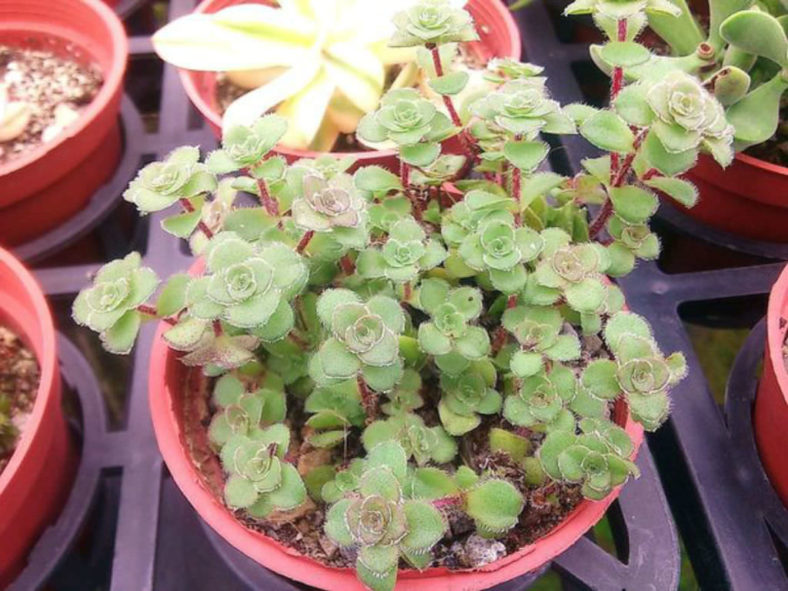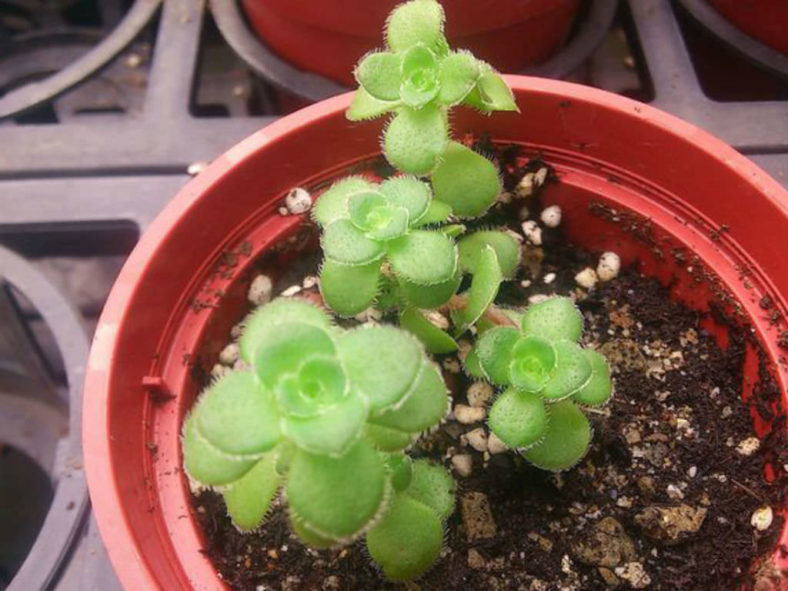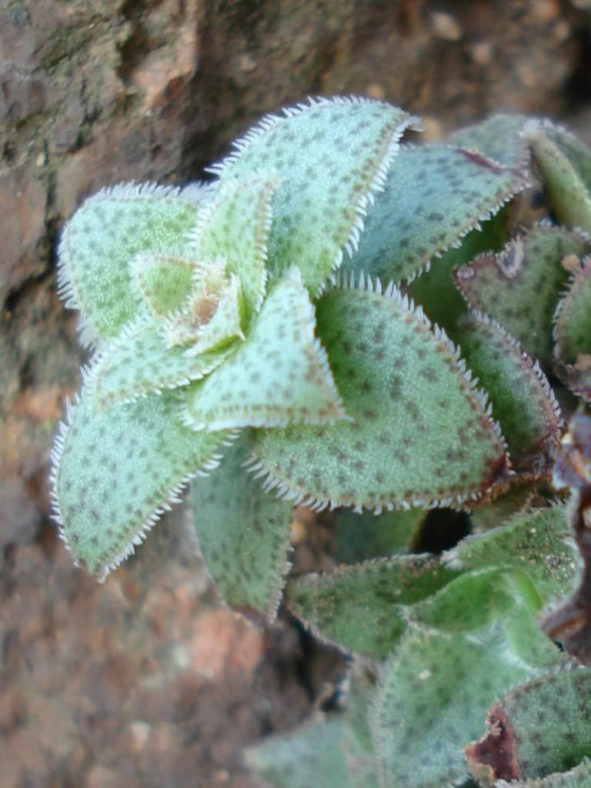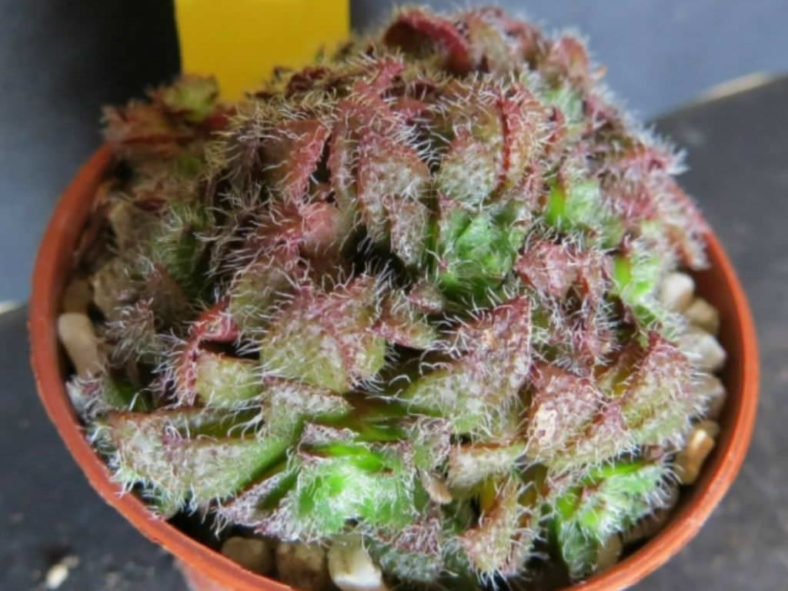Scientific Name
Crassula setulosa Harv.
Common Name(s)
Hairy Cushion Crassula
Synonym(s)
Crassula setulosa var. setulosa
Family: Crassulaceae
Subfamily: Crassuloideae
Genus: Crassula
Description
Crassula setulosa is an attractive small succulent that grows naturally as a dense mat. It can grow up to 4 inches (10 cm) tall, sometimes forming a cushion up to 16 inches (40 cm) wide. This species is very variable in appearance throughout its distribution, especially its leaves, which vary in size, shape, and hairiness. The leaves are typically up to 0.8 inches (2 cm) long and up to 0.4 inches (1 cm) wide, more often than not, with a convex upper leaf surface and tapering towards a point. Fine hairs are usually present on the upper surface, but hairless forms also occur. The leaves vary in color from bright green to grey-green in very hairy forms.
Depending on the form, flowers appear in midsummer through to fall. They are small and cup-shaped, white, often tinged red, and cluster to form a dense inflorescence up to 6 inches (15 cm) high. The flowers develop into small capsules, which release fine dust-like seeds.

Hardiness
USDA hardiness zones 10a to 11b: from 30 °F (−1.1 °C) to 50 °F (+10 °C).
How to Grow and Care
Crassulas are easy to grow but susceptible to mealy bugs and fungal diseases. As with all succulents, overwatering is fatal, so err on the side of too dry rather than too wet. Never let your plant sit in water. If you water from beneath by letting the plant sit in a saucer of water, pour off any excess water after a few minutes.
These succulents are generally started by division, offsets, or leaf cuttings. Crassulas can be easily propagated from a single leaf. Sprout leaves by placing them into a potting mix for succulents, then covering the dish until they sprout.
Repot as needed, preferably during the warm season. To repot your Crassula, ensure the soil is dry before repotting, then gently remove the pot. Knock away the old soil from the roots, removing any rotted or dead roots. Treat any cuts with a fungicide. Place the plant in its new pot and backfill it with potting soil, spreading the roots as you repot. Leave the plant dry for a week or so, then begin to water lightly to reduce the risk of root rot.
Learn more at How to Grow and Care for Crassula.
Origin
Native to Malawi, Mozambique, Zimbabwe, South Africa, Lesotho, and Swaziland.
Links
- Back to genus Crassula
- Succupedia: Browse succulents by Scientific Name, Common Name, Genus, Family, USDA Hardiness Zone, Origin, or cacti by Genus
Photo Gallery


